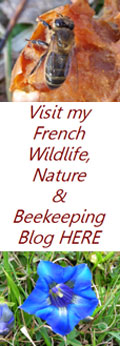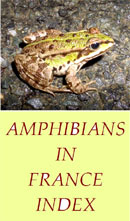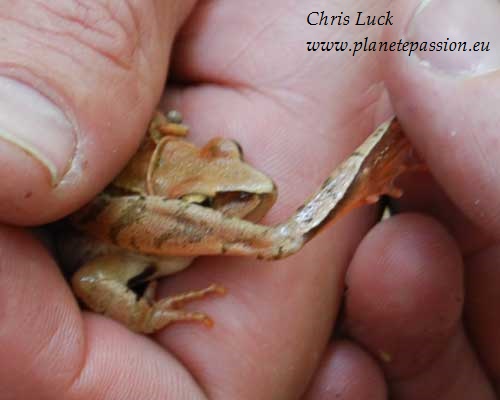
Grenouille Agile Rana dalmatina Agile Frog
The Agile frog has a maximum length of 9cm, slender in appearance, and has very long rear legs. Upper surfaces are beige, light brown or olive brown sometimes with darker blotches, underneath it is white or cream and variably spotted. Long head with pointed nose with a dark brown band that becomes progressively broader as it runs back from the nose through the eye. Eyes have large horizontal pupils and the rear legs have darker horizontal bands.
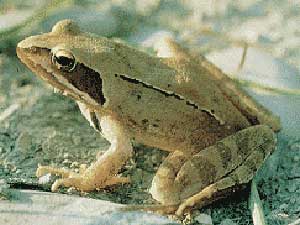
It is found in all regions of France where there is water, which it seldom moves far from, making existing habitat conservation where its presence is known extremely important. Diet is mainly earth worms, small slugs and insects. It can be active around dawn and dusk but during hotter weather it tends to be nocturnal. The male has no voice sacs and the females chant is rather subdued. Hibernation takes place from October until the end of January, but is not the same for the two sexes, males spend the winter in the silt at the bottom of pools, females seek out a hole in the ground or some other cavity on land. When in danger it is capable of leaping as far as two metres.
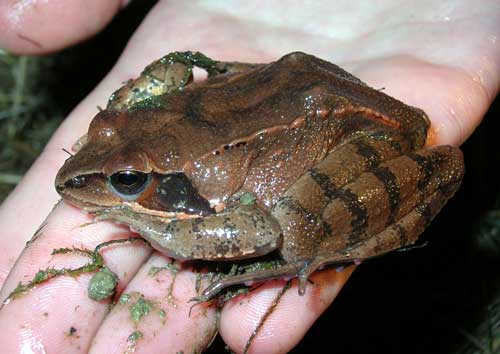
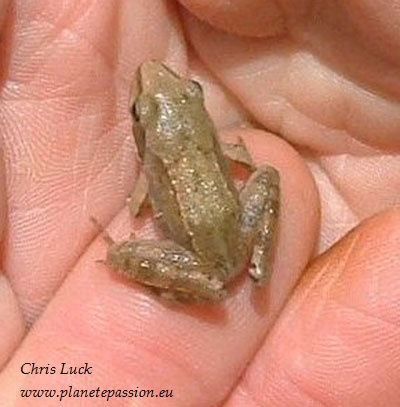
Photo above. Baby Agile frog that has just left the water, even at this size you can see the long rear legs.
Photo below. Rear leg length is considerably longer than the Common frog.

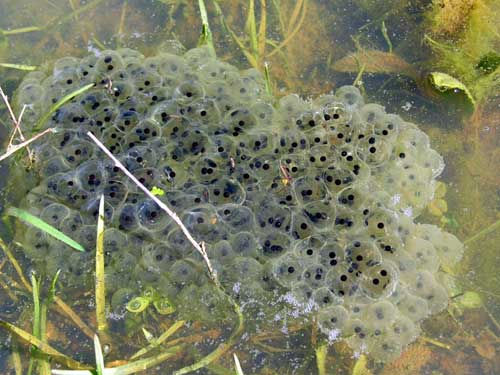
Reproduction takes place at the end of hibernation and the female spawns up to 3000 eggs which hatch after about 3 weeks, metamorphosis is about 2 months later.
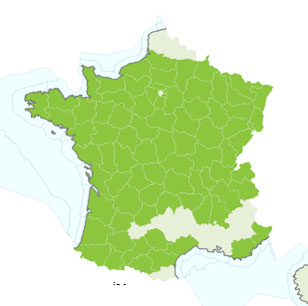
The fact that it can be found in almost all of the regions of France has a tendency to be misleading as populations are localised and often numerically weak. Overall decline, particularly in the north of its range. Berne convention, Annexe 2. Habitats directive, Annexe 4. National protection, Art.1.

